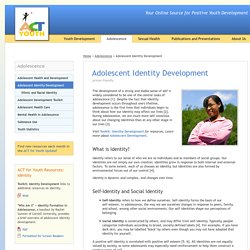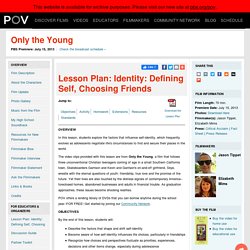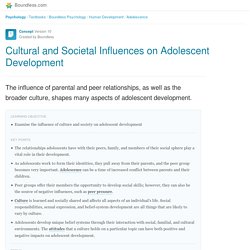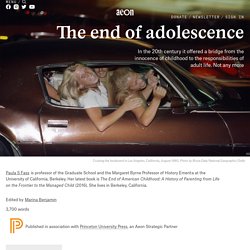

Dimensions of Equity. Making Connections: Culturally Responsive Teaching and the Brain. In reality, cultural responsiveness is more of a process than a strategy.

It begins when a teacher recognizes the cultural capital and tools students of color bring to the classroom. She is then able to respond to students' use of these cultural learning tools positively by noticing, naming, and affirming when students use them in the service of learning. The most common cultural tools for processing information utilize the brain's memory systems -- music, repetition, metaphor, recitation, physical manipulation of content, and ritual. The teacher is "responsive" when she is able to mirror these ways of learning in her instruction, using similar strategies to scaffold learning. For example, a science teacher I mention in the book wasn't having much success with her sixth-grade students learning the science vocabulary. Afterwards, learning weekly vocabulary was more active and game-like. Opa adolescent development explained download. Adolescent Identity Development: What to Expect in Teens.
Adolescent Identity Development: The Factors of Change Among the profound and exciting changes taking place in adolescence is the process of self-discovery. Our teens are working to figure out who they are, making adolescent identity development a central feature of teen life. Young people’s identities are shaped by lots of factors — family, cultural and societal expectations, experiences with institutions like school and the media, and friends.
Young people also take active steps and make choices that shape their identity. They select the environments and people they want to be around. Adolescent and Family Development Article. 5 Ways You Can Help Your Teen Create a Positive Identity. Adolescent Identity Development - Adolescence - ACT for Youth. The development of a strong and stable sense of self is widely considered to be one of the central tasks of adolescence [1].

Despite the fact that identity development occurs throughout one's lifetime, adolescence is the first time that individuals begin to think about how our identity may affect our lives [2]. During adolescence, we are much more self-conscious about our changing identities than at any other stage in our lives [3]. Visit Toolkit: Identity Development for resources.
Learn more about Adolescent Development. Shane Koyczan: "To This Day" ... for the bullied and beautiful. Sociocultural Factors on Adolescents. Creating Spaces. Lesson Plan: Identity: Defining Self, Choosing Friends. Download the Lesson Plan Jump to: In this lesson, students explore the factors that influence self-identity, which frequently evolves as adolescents negotiate life's circumstances to find and secure their places in the world.

The video clips provided with this lesson are from Only the Young, a film that follows three unconventional Christian teenagers coming of age in a small Southern California town. Identities. Cultural and Societal Influences on Adolescent Development. The relationships adolescents have with their peers, family, and members of their social sphere play a vital role in their development.

Adolescence is a crucial period in social development, as adolescents can be easily swayed by their close relationships. Research shows there are four main types of relationships that influence an adolescent: parents, peers, community, and society. When children go through puberty in the United States, there is often a significant increase in parent-child conflict and a decrease in cohesive familial bonding. Arguments often concern new issues of control, such as curfew, acceptable clothing, and the right to privacy. Parent-adolescent disagreement also increases as friends demonstrate a greater impact on the child; this is especially true when parents do not approve of new friends' values or behavior. The parent-child relationship When children go through puberty, there is often a significant increase in parent-child conflict. Culture. Identity Charts.
Adolescence is no longer a bridge between childhood and adult life. Adolescence as an idea and as an experience grew out of the more general elevation of childhood as an ideal throughout the Western world.

By the closing decades of the 19th century, nations defined the quality of their cultures by the treatment of their children. As Julia Lathrop, the first director of the United States Children’s Bureau, the first and only agency exclusively devoted to the wellbeing of children, observed in its second annual report, children’s welfare ‘tests the public spirit and democracy of a community’. Progressive societies cared for their children by emphasising play and schooling; parents were expected to shelter and protect their children’s innocence by keeping them from paid work and the wrong kinds of knowledge; while health, protection and education became the governing principles of child life.
Teaching Teen Identity. Erik Erikson’s Identity Crisis: Who am I? Lesson Plan: Identity: Defining Self, Choosing Friends. For Our White Friends Desiring to Be Allies. Author's Note: I'm writing this in hopes that it can be used to lighten the load of marginalized folks, keeping in mind that not all marginalized people want to engage in the ally conversation, and that is perfect as well.

For those who do, my prayer is that when someone asks you the question, “how can I be a stronger ally?” You might choose to save your breath/energy and send this in its place. I have been asked by two dear friends, “how can I be a stronger ally?” Being the slow emotional processor that I am, I wanted to spend some time with this before I answered them. I surely appreciate and love these two individuals, and I appreciate their vulnerability in asking me this question. I am not going to do much coddling here; I don’t know that I believe that love requires coddling. 1. 2. 3. 4. 5. 6. I love Jesus. It will never be possible for us to be colorblind, and we shouldn’t ever want to be. Yup, now I’m talking about reparations. Privilege means that you owe a debt. 1. 2. 3. 4. 5. Equality Is Not Enough: What the Classroom Has Taught Me About Justice. Imagine this situation: A classroom of students is settling down to work on a writing task.

All of a sudden, one student exclaims, “That’s not fair! Why do they get to listen to the instructions on the headphones! I want to listen, too!” This happens way more often than you think. Not because teachers are inherently unfair creatures (I would know; I’m a teacher), but because students have come to understand “fairness” as simply equal treatment.